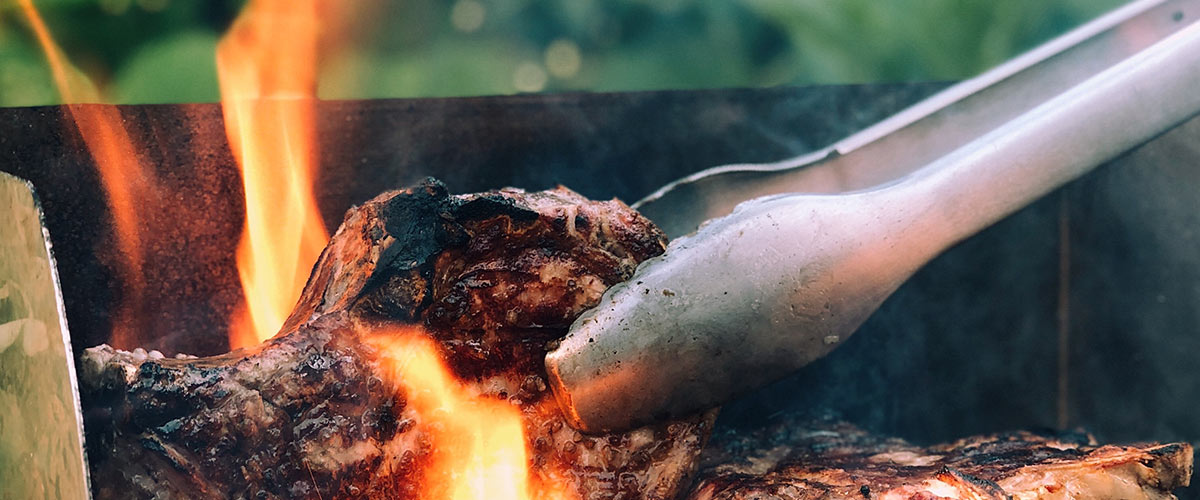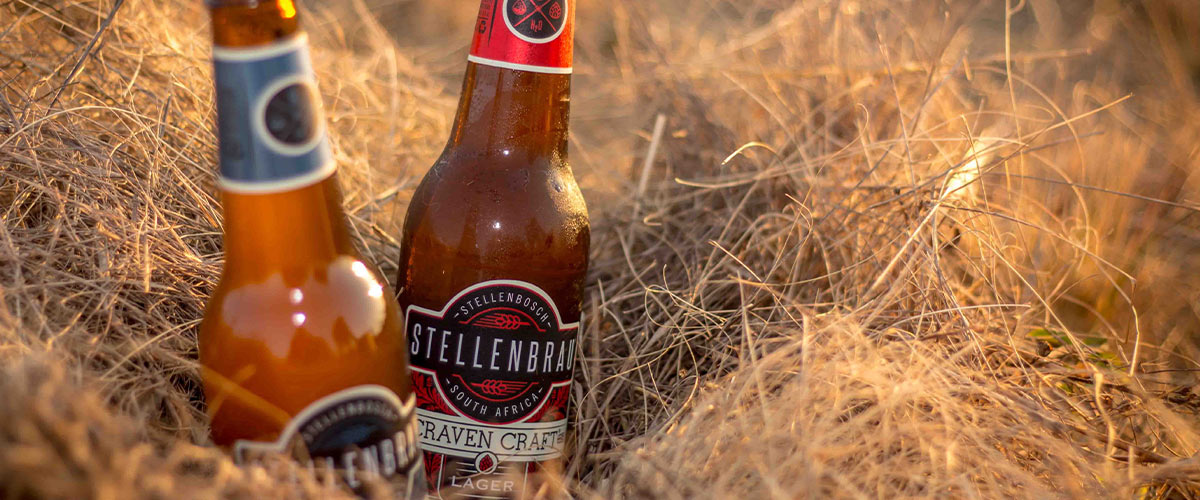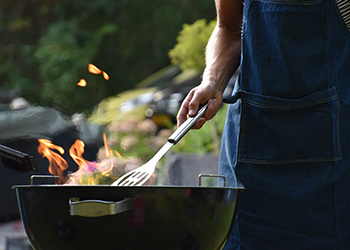Summer in Cape Town means one thing: the aroma of meat being cooked to perfection over hot coals wafting from the gardens and outdoor areas of the city’s inhabitants. There’s nothing more South African than a “braai” which is this country’s version of a barbecue and to be enjoyed by family and friends in the sunny outdoors. The word “braai” is an integral part of any locals lexicon and is an important cultural event for any visitor to South Africa. We’ve compiled all of the important background information about the “braai” so you can jump right into local culture without missing a beat.

What exactly is a braai?
A braai is what Americans might consider a barbeque; however, while most Americans use gas, electricity or charcoal to fuel the fire, South Africans almost always use wood (charcoal is sometimes considered cheating). Furthermore, the cultivation of the fire using wood is considered a true art form. Usually, the host of the braai is in charge of tending the fire and with that comes great responsibility. Guests often hover around the braai with a glass of wine, a beer or sometimes even a brandy and coke (also known as karate water) as the “braai master” turns the meat on the grill.
SIDEWAYS TIP: the type of wood used to make the fire can make a difference.
- Rooikrans (or Red Garland) burns quickly but gives good coals
- Kameeldoring (or camel thorn) burns slowly and gives high heat and hot coals
- Wingerd (vine wood) burns very fast and doesn’t provide lasting coals but is good for starting fires and for aroma and flavour
Afrikaans saying: Jy krap nie aan ‘n ander man se vuur nie. Translation: You don’t mess around with another man’s fire!
What is the origin of the braai?
The word “braai” originated in the old Dutch colony of South Africa many years ago. It is believed that the word “braden” (to roast in Dutch) evolved over time to create the word we use today. It is difficult to find the exact etymology as the Afrikaans language, the sister language of Dutch, is not well documented.
Nowadays, a braai is common practice for most South African households and is always a social occasion (although a braai for two can sometimes make for an excellent date night and a braai for one is a glorious thing). The atmosphere around a braai is often celebratory…birthdays, engagements, graduations and national holidays are all celebrated but the truest expression of a braai is a celebration of friends and family. It is a moment of gathering, sharing and loving around the fire with a drink in hand.
A braai can be made at any time and anyplace, however, one specific day on South Africa’s calendar is dedicated specifically to the braai. September 24th in South Africa is officially called Heritage Day but is fondly referred to as Braai Day. It is a celebration of the cultural diversity of South Africa and is a unifying force in a country still dealing with the shared trauma of its tumultuous past.

Braai food & beverage items
Snacks:
- Biltong – Biltong and droewors are forms of dried, cured meat, specially seasoned with a unique blend of spices that make it different from any kind of cured meat typically found outside South Africa (other countries might call it jerky but it’s quite different!). Various types of meat are used, including beef, ostrich, impala, kudu, warthog and more. Biltong and droewors originate from Voortrekkers (pioneers in Afrikaans) having to preserve meat for a long journey into the northern hinterland.
HINT: You can discover biltong during a tasting as part of our Cape Town City Foodie tour.
- Chips ‘n Dip – a classic South African favourite with dips including the likes of snoek pate and hummus.
Mains:
- Boerewors – Boerewors means “Farmer’s sausage” in Afrikaans, which, as it implies, is a traditional local sausage made of either just beef or a mixture of pork & beef. The difference between traditional sausage and boerewors is the abundance of spices like allspice, coriander, cloves, nutmeg and black pepper mixed with the meat.
SIDEWAYS TIP: Boerewors from the Grabouw region is the best.
- Lamb chops – A local braai favourite. Marinate them for one hour with garlic, rosemary and thyme and you won’t regret it.
SIDEWAYS TIP: Lamb chops from the Karoo region are considered a regional favourite.
- Steak – Rump for flavour, fillet for tenderness, t-bone for the hungry. It’s always a good idea to check with the local butcher what you should be taking to your braai. Ostrich steaks are also a local favourite.
- Chicken – Sometimes considered ‘salad’ by braai purists. Chicken kebabs are popular (chicken pieces on a stick with a variety of sliced vegetables in between the pieces) and skilled braai enthusiasts have been known to cook whole chickens on the fire with an open beer in the body cavity (for moisture and flavour, the same way one would use a lemon).
- Seafood – If you find yourself at a braai anywhere along the coast, you’re likely to find snoek, tuna or locally caught crayfish tails, amongst other seafood delicacies, sizzling over the hot coals.
Sides:
- Braaibroodjie – A grilled sandwich filled with sliced tomatoes, onions, cheddar cheese and sweet chutney. This sweet and savoury sandwich is inserted into a foldable grid with handles that keeps it contained and can easily be flipped.
- Pap – Pap, also called mieliepap, means “maize porridge” in Afrikaans. A traditional porridge or polenta-like dish, it has the consistency of mashed potatoes and is often served with a savoury sauce like tomato and onion relish or mushrooms and cheese and is eaten with one’s hands.
- Roosterkoek – Roosterkoek literally means “grill cake” in Afrikaans. It is considered the traditional bread to accompany braai meat. They are simply balls of bread dough cooked on a grid over the coals, and are best eaten piping hot and straight off the grill.

Best beverages to bring to a braai:
While you’re waiting for the braai to get going, it’s crucial to have a beverage in hand. We’ve provided our recommendations for the best braai and beverage pairings below.
White Wine & Rose:
- Chenin – AA Badenhorst/Rijks Private Cellar
- Chardonnay – De Wetshof/Hamilton Russel/Creation Wines
- White Blends – Mullineux & Leeu Family Wines/Buitenverwaching
- Rosé – Boschendal/Fable Mountain
Red Wine:
- Cabernet Sauvignon – Warwick First Lady/Glen Carlou/Jordan
- Shiraz – Eagles Nest
- Merlot – Plaisir de Merle
- Pinotage – Kanonkop
- Red Blends – Newton Johnson Full Stop Rock
Beer:
- Stellenbrau, Jack Black, Devil’s Peak Brewery, & Union
Cider:
- Eversons, Sxollie, Cluver & Jack

Braai ettiquette – How to braai like a local
There are some things that one needs to know before coming to South Africa and experiencing a traditional braai. We’ve decoded the etiquette and expectations for you below.
An invitation to a braai will often include instructions on what you are expected to bring and what will be provided by the host or hostess. If the braai is called a “chop ‘n dop” it means you are expected to bring your own meat (chop) as well as your own beverages (dop). In this case, the hostess will provide the sides, salads and of course the fire and coals to grill your meat. If you are invited to a “bring and braai,” that means you are expected to bring everything except the fire!
Most braais will be on a weekend and start in the late afternoon, around 3 or 4pm, and can sometimes carry on into the early hours of the morning. An important piece of advice is NOT to arrive hungry as most often you will find that you won’t end up eating until quite late in the event (although the snacks will help).
Your meat will be cooked by the “braai master,” which is normally the host. When you arrive, ask where you should put your meat and drinks and ask if you can help with anything. You’ll normally be offered a drink and then introduced to the rest of the people at the braai. The rugby may be on in which case make sure you know who’s playing. Otherwise, you can settle in, sit back and enjoy the experience like a local.
